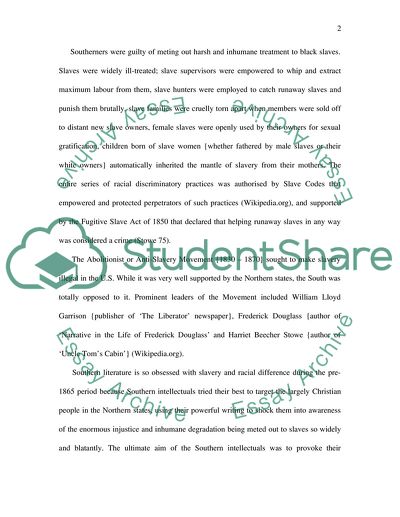Cite this document
(“Why is southern literature so obsessed with slavery and racial Essay”, n.d.)
Why is southern literature so obsessed with slavery and racial Essay. Retrieved from https://studentshare.org/miscellaneous/1543886-why-is-southern-literature-so-obsessed-with-slavery-and-racial-difference-discuss-in-relation-to-three-texts-studied-on-the-module-literature-of-the-american
Why is southern literature so obsessed with slavery and racial Essay. Retrieved from https://studentshare.org/miscellaneous/1543886-why-is-southern-literature-so-obsessed-with-slavery-and-racial-difference-discuss-in-relation-to-three-texts-studied-on-the-module-literature-of-the-american
(Why Is Southern Literature so Obsessed With Slavery and Racial Essay)
Why Is Southern Literature so Obsessed With Slavery and Racial Essay. https://studentshare.org/miscellaneous/1543886-why-is-southern-literature-so-obsessed-with-slavery-and-racial-difference-discuss-in-relation-to-three-texts-studied-on-the-module-literature-of-the-american.
Why Is Southern Literature so Obsessed With Slavery and Racial Essay. https://studentshare.org/miscellaneous/1543886-why-is-southern-literature-so-obsessed-with-slavery-and-racial-difference-discuss-in-relation-to-three-texts-studied-on-the-module-literature-of-the-american.
“Why Is Southern Literature so Obsessed With Slavery and Racial Essay”, n.d. https://studentshare.org/miscellaneous/1543886-why-is-southern-literature-so-obsessed-with-slavery-and-racial-difference-discuss-in-relation-to-three-texts-studied-on-the-module-literature-of-the-american.


